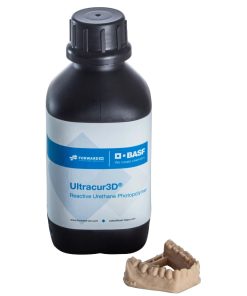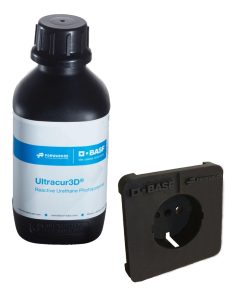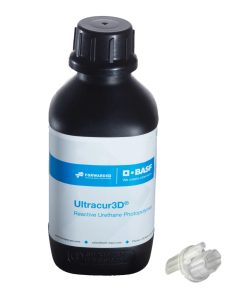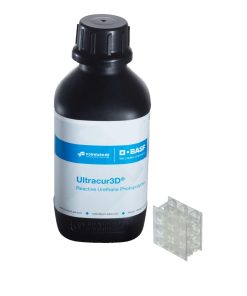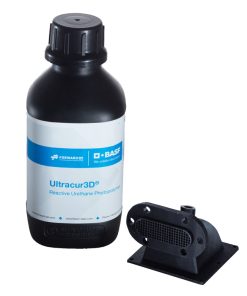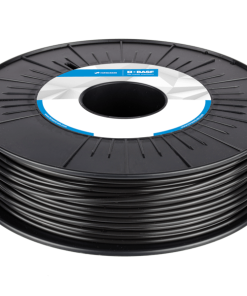Protopasta Metal Composite HTPLA – 1.75mm (500g) – Copper filled Protopasta
$ 49,99 $ 29,99
Protopasta Copper-filled Metal Composite HTPLA – 1.75mm (500g)
Copper Metal-Filled PLA Filament
Introducing Copper-Filled Metal Composite HTPLA. Using real copper powder, Protopasta has created a premium heat treatable metal PLA filament for 3D prints that finish just like real metal! Protopasta’s copper composite filament is as versatile as it is beautiful, printing like plastic, but finishing like real metal for beautiful, durable parts from most standard 3D printers.
Whether you want your prints to be polished with the same bright mirror finish of shiny copper coins or a naturally rustic finish with an acquired patina reminiscent of an aged copper sculpture, the possibilities are endless with this specialty metal PLA filament. With so many finishing options, the sky is the limit!

Terracotta or cast copper? Brush, polish, or patina and enjoy!
Introducing Copper-Filled Metal Composite HTPLA. Using real copper powder, we’ve created a premium heat treatable metal PLA filament for 3D prints that finish just like real metal! Our copper composite filament is as versatile as it is beautiful, printing like plastic, but finishing like real metal for beautiful, durable parts from most standard 3D printers.
FINISHING TECHNIQUES
Whether you want your prints to be polished with the same bright mirror finish of shiny copper coins or a naturally rustic finish with an acquired patina reminiscent of an aged copper sculpture, the possibilities are endless with this specialty metal PLA filament. With so many finishing options, the sky is the limit! Here are just a few common finishing techniques for metal composite filaments you might want to try:
- Heat treat your HTPLA print to survive harsher environments like the hot sun or a warm polishing wheel
- Wire Brush to expose metal for future oxidation or a bright, satin finish
- Rock tumble with steel shot for darker, but smooth, shiny look
- Paint part (black for example) to fill recesses with a contrasting color
- Polish with a rotary tool, cotton buff, and polishing compound for a bright, mirror finish on high spots (darkens low spots)
- Polish with paper for a clean, smooth, and bright finish with less darkening
- Patina (oxidize) exposed metal naturally or accelerate with a 50/50 vinegar/hydrogen peroxide mixture saturated with salt. Place in sealed plastic bag to retain moisture. Heat further accelerates reaction.
Try these techniques separately or combine! Change the order or try something new. If you discover a new technique, make something beautiful, or discover something unexpected, share it! When you’ve got that perfect, WOW finish, consider preserving it with a clear coat or brush applicable water-based, food-safe, and dishwasher safe coating like Modge Podge.
HEAT TREATING & APPLICATIONS
Heat treating beforehand to firm up HTPLA helps parts hold shape up to near melting (175C). Protect your investment in warm environments or push limits of application by exploring copper’s thermal conductivity. There is not enough copper to be electrically conductive, sintered, or plated, but there is a noticeable difference in weight and heat transfer.
Some application ideas include:
- Faux brick or stone
- Fixtures or hardware
- Knobs or buttons
- Heat sinks or exchangers
- Fine art & sculpture
- Emblems, signage, or trophies
- Jewelry, like pendants or bracelets
- Cosplay, game pieces, or figurines
MATERIAL DATA
- Base resin: HTPLA – Heat Treatable PLA
- Additive: Real Copper Powder
- Particle size: less than 250 micron (0.25mm)
- Odor: low or no
- Density: Approx. 2.30 g/cc
- Length (500g): 97m (1.75mm) and 36m (2.85mm)
- Heat treating: 110C (225F) for 10 min or as required for desired result
- Total loss of stiffness (before heat treat): 50-60C (Tg)
- Total loss of stiffness (after heat treat): 150-175C (melting)
- Dimension change (before heat treat): 0% X/Y/Z
- Dimension change (after heat treat): 1.5% shrink X/Y and 1% growth Z typical but please calculate and confirm for your specific print and process
PRINTER SETTINGS
- Speed: 10-20 mm/s 1st layer, 20-80 mm/s rest of part
- Nozzle Set-point: 185-215C (hottest on 1st layer for best adhesion)
- Nozzle Actual: maintain set-point, reduce speed if less than
- Nozzle Type: Standard or wear resistant for extended use
- Nozzle Diameter: 0.6mm or larger preferred, 0.4mm okay with 0.25mm minimum for experts
- Layer thickness: 0.15-0.20mm recommended for a balance of quality, reliability, and productivity
- Bed Temperature: Room-60C (over 60C can worsen warp)
- Bed Preparation: Elmers purple disappearing glue stick or your other favorite PLA surface preparation
This material has been flow optimized and has less moisture uptake than standard PLAs, however composites are still sometimes more tricky to print depending on hardware and software settings. The main challenge is to keep mass flow up (larger nozzle + fast speed) and in a single direction (minimal retraction) to avoid heat soak.
Professional packing and fast shipping
Due to our longstanding partnership with UPS FedEx DHL and other major global carriers, we are able provide a range of shipping options. Our warehouse staff is highly trained to package your goods exactly as per the specifications we offer. Before shipping the goods are carefully inspected and secured. Everyday we deliver thousands of packages to customers from all over the world. This is a testament to our commitment to be the largest online retailer worldwide. The warehouses and centers for distribution are situated in Europe and the USA.
Orders with more than one item are given processing time for each item.
Before shipping, we will conduct a thorough inspection of the items you've ordered. Currently, most orders are shipped within 48-hours. Expected delivery time is between 3 and 7 days.
Returns
The stock is dynamic and we do not fully manage it because of the fact that multiple stakeholders are involved, including our factory and warehouse. The actual levels of stock can change at any moment. It's possible that the stock may run out after your order has been placed.
The policy is 30 days. If you haven't received the product within 30 days, we are not able to issue a refund or an exchange.
For your item to be returned, it must be unopened and in the same state as you received it in. It must also be in the original packaging.
Related products
3D Printer Resin
3D Printer Parts
3D Printer Resin
3D Printer Parts
Bambu Lab Stainless Steel Extruder Unit – P1 Series Bambu Lab
3D Printer Parts
3D Printer Resin
3D Printer Resin
3D Printer Accessories
.4MM drill cleaning tool for 3D nozzle cleaning Wanhao Precision Casting Co., Limited
3D Printer Resin
Filament
3D Printer Resin
3D Printer Parts
3D Printer Parts
3D Printer Resin
3D Printer Parts
3D Printer Resin
3D Printer Resin
3D Printer Parts
Aluminum Vat With FEP Pre Installed – Phrozen Transform Fast PHROZEN
3D Printer Resin
3D Printer Resin
3D Printer Resin
Filament
3D Printer Resin
3D Printer Resin
3D Printer Accessories
3D Printer Parts
3D Printer
3D Printer Accessories

















